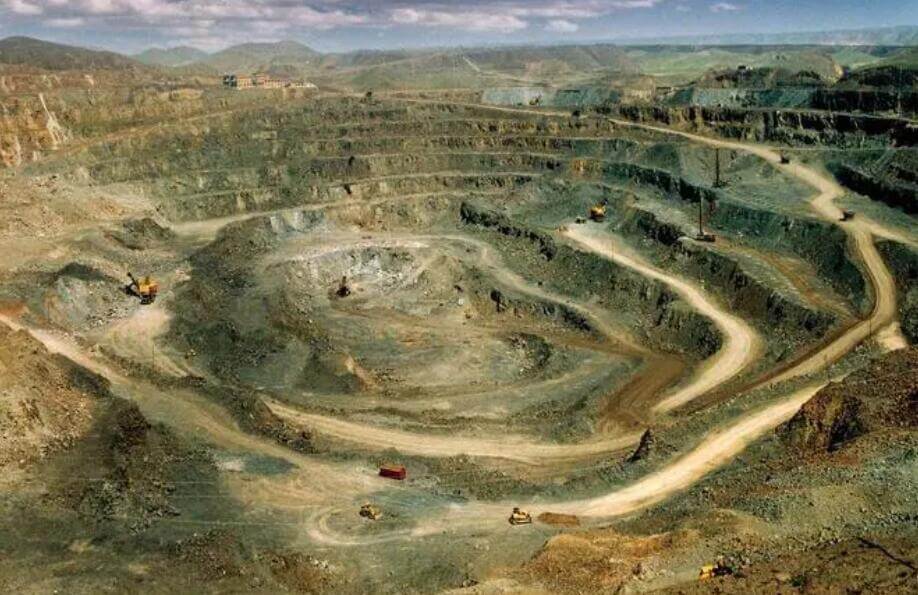Welcome to an exciting journey into the realm of rare earth ores! In this blog, we will explore rare earth ore, its distinctive features, wide-ranging applications, global distribution, the intricate process of mining these valuable elements, and the beneficiation of rare earth.
What is Rare Earth Ore?
Rare earth ore, known as rare earth minerals, is a group of seventeen chemical elements in the periodic table’s lanthanide series. The elements include lanthanum, cerium, praseodymium, neodymium, promethium, samarium, europium, gadolinium, terbium, dysprosium, holmium, erbium, thulium, ytterbium, lutetium, and two additional elements, yttrium and scandium. Although not genuinely scarce, they are called “rare” due to their wide dispersal in the Earth’s crust.
Rare Earth Ore Features
Rare earth ores possess unique properties that distinguish them from other minerals:
- Magnetic Properties
Some rare earth elements, such as neodymium and samarium, are known for their strong magnetic characteristics, making them vital for manufacturing powerful magnets. - Luminescence
Elements like europium and terbium exhibit luminescence, which is crucial for creating phosphors used in lighting and display technologies. - Catalytic Abilities
Certain rare earth elements act as efficient catalysts in various chemical reactions, making them indispensable in industrial processes.
Rare Earth Application
The versatile applications of rare earth elements include:
- Electronics and Technology
Rare earth elements are essential components in electronic devices, contributing to improved performance and energy efficiency. - Renewable Energy
High-performance magnets made from rare earth elements are instrumental in wind turbines and electric vehicle motors, facilitating the growth of clean energy. - Defense and Aerospace
Rare earth elements are critical in producing advanced defense systems, radar technologies, and aerospace components. - Medical Technologies
Rare earth elements are used in medical imaging and treatment, enhancing diagnostic accuracy and therapeutic applications.
Rare Earth Distribution
The distribution of rare earth elements is uneven worldwide. Most production comes from China, with significant reserves also found in countries like Australia, the United States, and Brazil. Diversifying the global supply chain is a priority to ensure stability and security in access to these vital resources.

How to Mine Rare Earth?
Mining rare earth elements is a complex and environmentally sensitive process. Different methods are employed, including:
- Open-Pit Mining
When the ore is close to the surface, this method removes large overburden to access the ore. - Underground Mining
Employed when the ore is deeper, it involves constructing tunnels and shafts to extract valuable minerals. - In-Situ Leaching
This technique involves injecting a leaching solution into the ground to dissolve the rare earth elements, which are then pumped to the surface for processing.
Rare earth ores are pivotal in powering modern technologies and sustainable industries worldwide. Understanding their features, applications, distribution, and the complexities of mining is essential in ensuring responsible utilization and long-term availability of these valuable elements. As we continue to explore innovative mining and recycling methods, we can embrace the potential of rare earth ores while preserving our planet’s precious resources.
How to Beneficiate Rare Earth Ore?
Beneficiation of rare earth ore is a process that aims to separate and concentrate the valuable rare earth elements from the ore, making it suitable for further processing and use in various applications. The beneficiation process can vary depending on the specific composition of the rare earth ore and the desired end products. Below are the general steps involved in the beneficiation of rare earth ore:
Crushing and Grinding
The rare earth ore is first crushed into smaller particles to increase the surface area for further processing. It is then ground into a fine powder to liberate the rare earth minerals from the gangue minerals.
Gravity Separation
In some cases, gravity separation techniques can be used to separate rare earth minerals from gangue minerals based on their differences in density. This method is effective for ores with distinct density differences between rare earth minerals and other minerals.
Froth Flotation
Froth flotation is a common method of separating minerals based on their surface properties. In the case of rare earth ore, chemicals (collectors) are added to the ground ore to make the rare earth minerals hydrophobic, while the gangue minerals remain hydrophilic. Air bubbles are then introduced, and the hydrophobic rare earth minerals attach to the bubbles, rising to the surface, where they can be collected.
Magnetic Separation
Rare earth minerals often exhibit strong magnetic properties, allowing them to be separated from non-magnetic gangue minerals using magnetic separators.
Leaching
Leaching involves using chemical solutions to dissolve rare earth minerals from the ore. The leaching process depends on the ore composition and the desired rare earth elements to be extracted. Different leaching agents, such as acids or alkalis, can selectively dissolve rare earth minerals.
Solvent Extraction
Solvent extraction further separates and concentrates the rare earth elements obtained from leaching. This process involves using organic compounds (solvents) that selectively bind to specific rare earth elements, allowing for their separation from the solution.
Precipitation and Crystallization
After solvent extraction, the rare earth elements can be precipitated and crystallized to obtain higher purity concentrates.
Hydrometallurgical Processing
In some cases, a hydrometallurgical process can be used, which involves dissolving the rare earth elements in a suitable solvent and then selectively precipitating them back out of the solution.
It’s important to note that the beneficiation process for rare earth ore can be highly complex and may involve a combination of several of the above steps. Environmental considerations and sustainability are also crucial to ensure responsible and eco-friendly practices during the beneficiation process.
